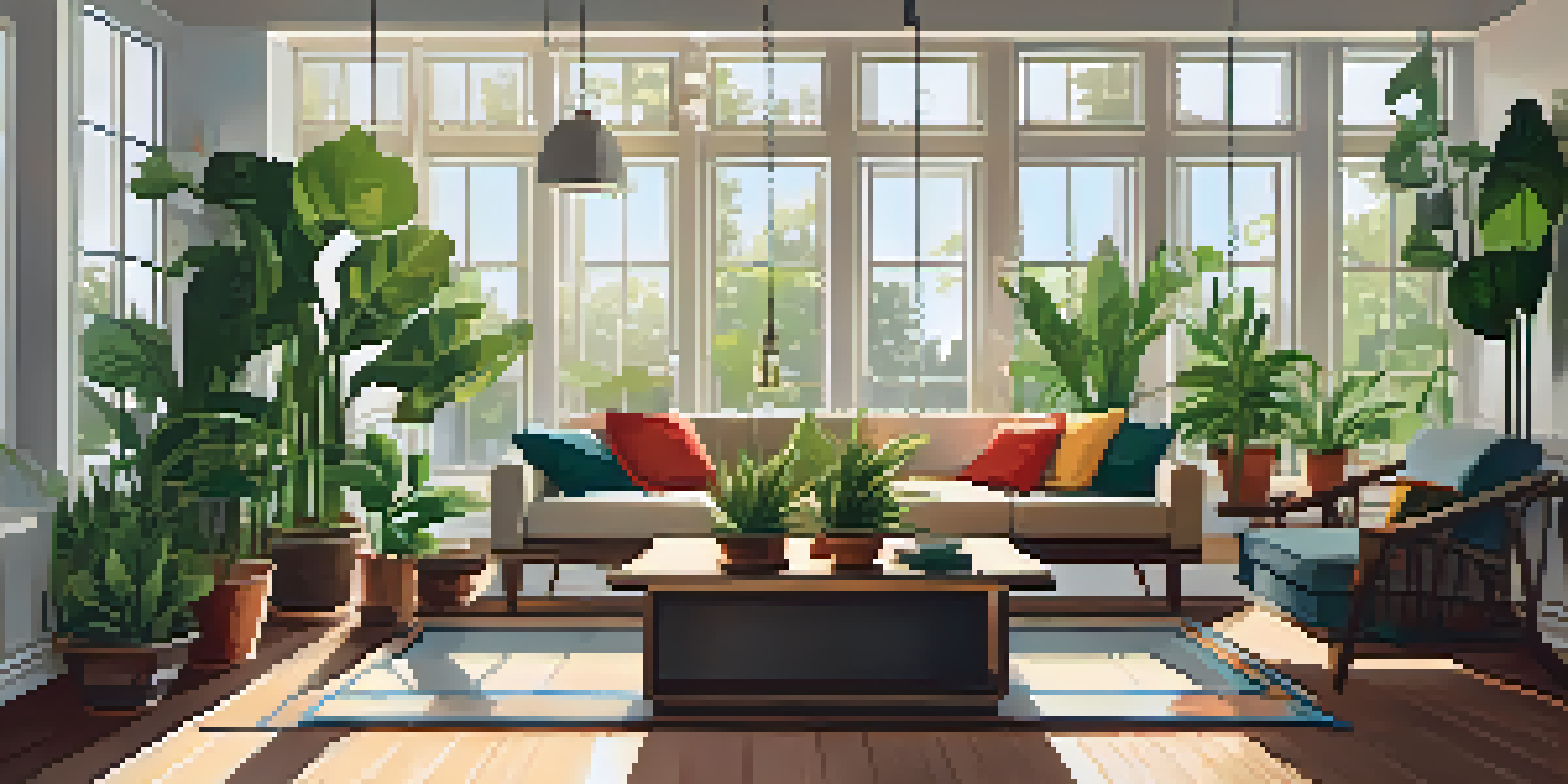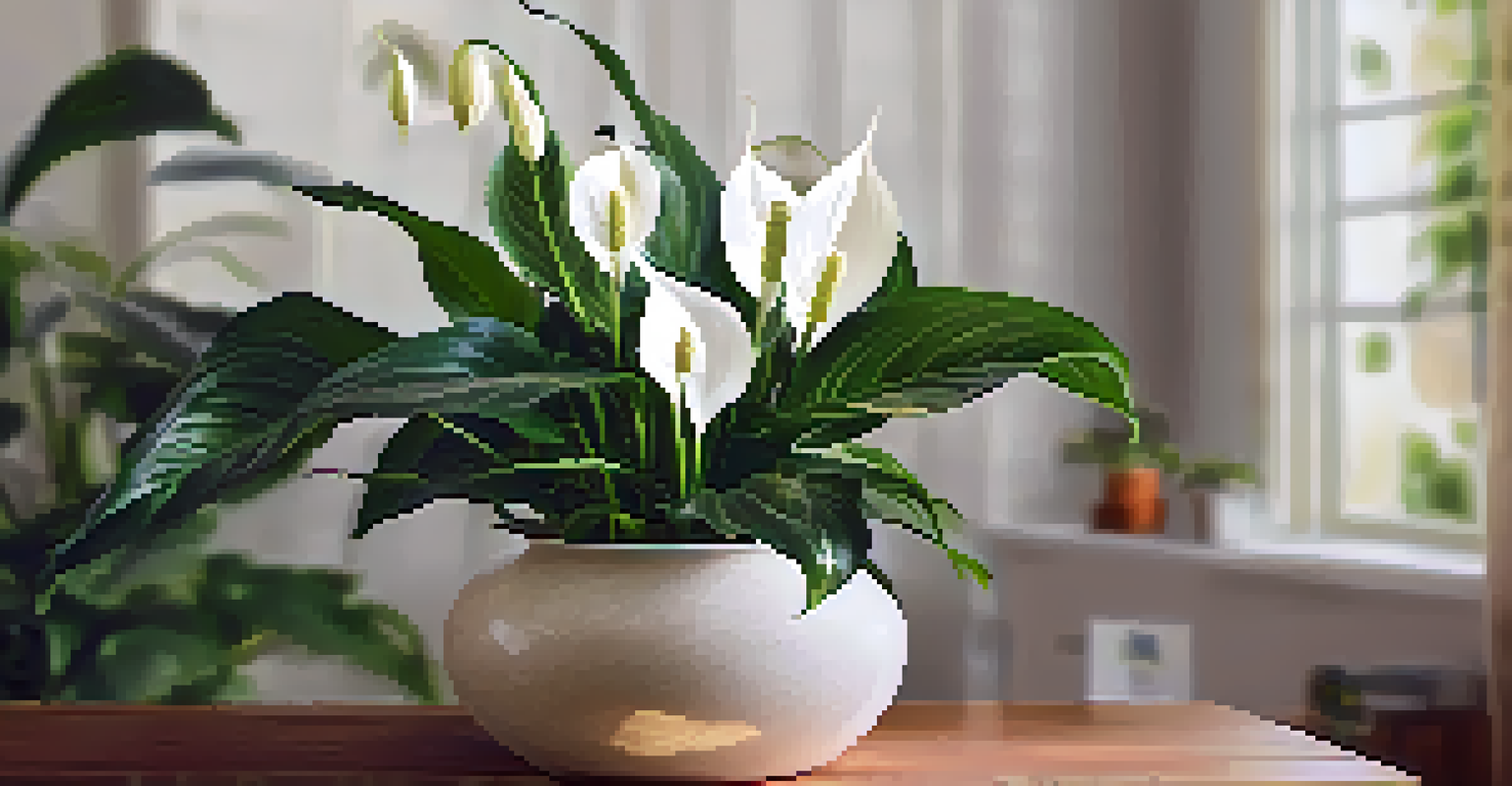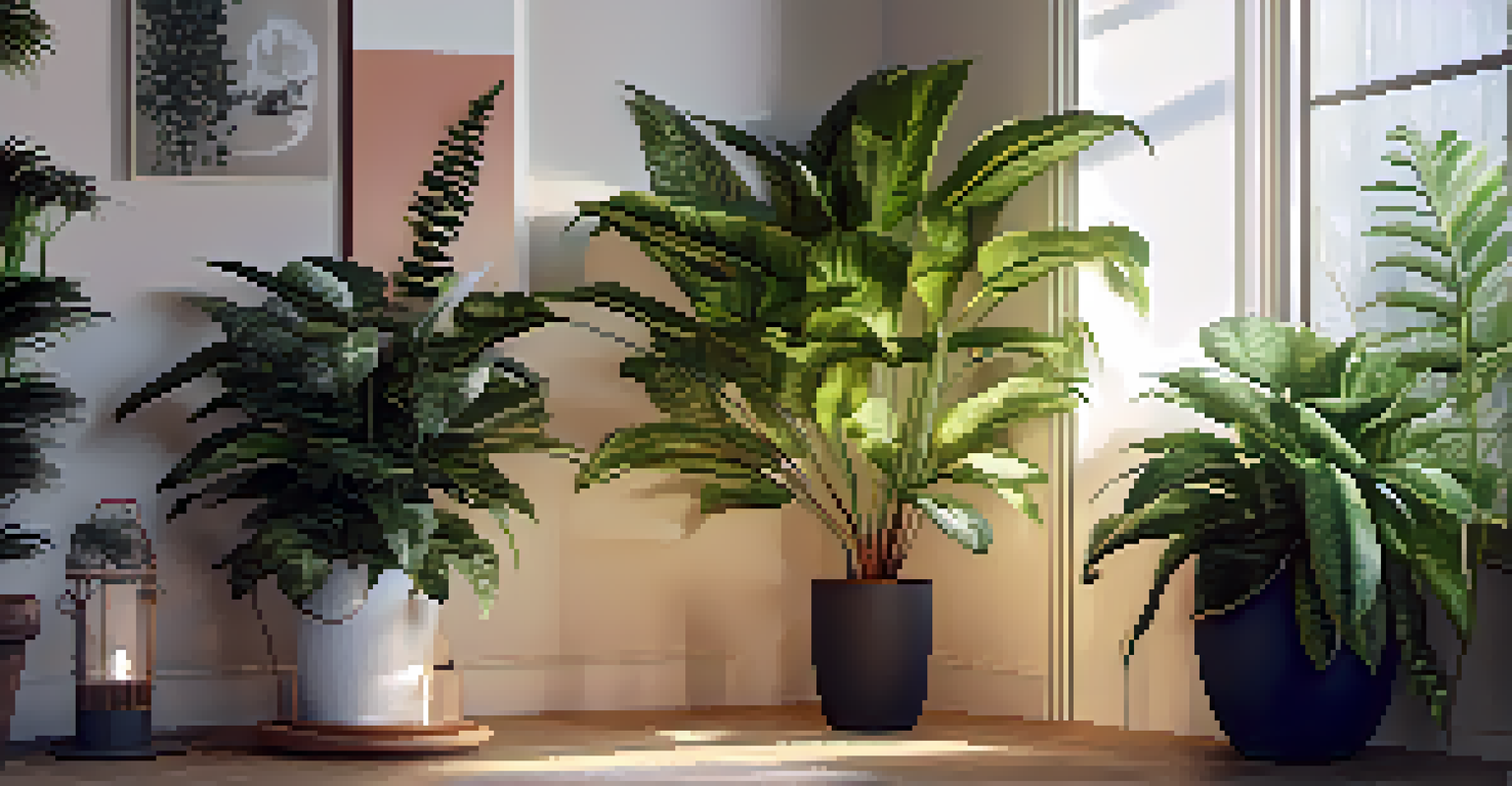Indoor Plants: Improving Air Quality and Mental Wellness

The Connection Between Indoor Plants and Air Quality
Indoor plants are more than just decorative elements; they play a crucial role in enhancing air quality. Studies have shown that various houseplants can absorb toxins and pollutants, making the air we breathe cleaner. For instance, plants like spider plants and peace lilies are known for their ability to filter out harmful substances such as formaldehyde and benzene.
Plants can improve your mood and overall well-being, creating a more inviting and tranquil environment.
When you bring these green companions into your home, you’re essentially inviting natural air purifiers to do their magic. The process of photosynthesis not only produces oxygen but also helps to reduce carbon dioxide levels, creating a fresher indoor environment. This is particularly beneficial in today's world, where many of us spend most of our time indoors.
Moreover, having a variety of plants can create a more balanced ecosystem within your living space. The presence of plants can lead to reduced dust levels and improved humidity, contributing to overall better air quality. It’s a simple yet effective way to make your home healthier and more enjoyable.
Mental Wellness: The Psychological Benefits of Indoor Plants
Beyond their air-purifying abilities, indoor plants can significantly enhance our mental wellness. Numerous studies have indicated that being around greenery can reduce stress and anxiety levels, making us feel more relaxed and at ease. Just a few moments spent tending to your plants can be a soothing and grounding experience.

For many, caring for plants can also foster a sense of responsibility and purpose. Watching a plant thrive under your care can instill feelings of accomplishment and joy. This simple act of nurturing can provide a much-needed mental boost, especially in our fast-paced, often overwhelming lives.
Indoor Plants Improve Air Quality
Houseplants like spider plants and peace lilies filter toxins, enhancing the cleanliness of the air we breathe.
Additionally, incorporating plants into your space can improve focus and creativity. The presence of greenery has been shown to increase concentration levels and boost mood, making it easier to tackle daily tasks or engage in creative projects. Whether you’re working from home or unwinding with a hobby, plants can create a more inspiring atmosphere.
Popular Indoor Plants for Air Quality Improvement
When choosing plants for your home, it's essential to select those known for their air-purifying properties. Some of the top contenders include the snake plant, which thrives in low light and requires minimal care, and the pothos, known for its ability to filter formaldehyde. These plants are perfect for beginners and busy lifestyles alike.
The best time to plant a tree was 20 years ago. The second best time is now.
Another excellent option is the rubber plant, which can absorb airborne toxins while also adding a touch of elegance to your décor. Its large, glossy leaves not only look great but also help improve indoor humidity levels, making your home feel more comfortable. Plus, they can grow quite tall, making a bold statement in any room.
Lastly, consider the Boston fern, a lush plant that excels at removing pollutants and increasing moisture. This plant does require a bit more attention in terms of humidity and watering, but the benefits it provides to your indoor air quality are well worth the effort. By choosing a mix of these plants, you can create a vibrant and health-boosting green space.
Creating an Indoor Garden for Mental Health
Designing an indoor garden can be a fun and fulfilling project that enhances both your space and your well-being. Start by selecting a variety of plants that suit your personal style and the lighting conditions of your home. A mix of tall and short plants can create visual interest and balance.
Consider using decorative pots or planters that complement your home’s aesthetic. This not only enhances the beauty of your indoor garden but also makes caring for your plants feel like an extension of your home decor. Adding personal touches, such as fairy lights or small sculptures, can further personalize the space.
Plants Boost Mental Wellness
Caring for indoor plants can reduce stress and foster a sense of responsibility, promoting a greater sense of well-being.
Don’t forget about the arrangement! Placing plants in areas where you spend the most time—like your living room, home office, or kitchen—can maximize their positive impact on your mood and productivity. Creating a designated plant corner can also give you a serene space to unwind and connect with nature.
How to Care for Indoor Plants Effectively
Caring for indoor plants doesn't have to be daunting; with a few simple guidelines, you can keep your green friends thriving. First, understand the specific needs of each plant, as some may prefer bright light while others thrive in low light. Regularly checking on their moisture levels is also crucial, as overwatering can be just as harmful as underwatering.
Establish a watering routine that aligns with the needs of your plants. For example, succulents and cacti need less frequent watering compared to leafy greens like ferns. A good rule of thumb is to check the top inch of soil—if it feels dry, it’s time to water.
Fertilizing your plants during the growing season can also give them an added boost. Using a balanced houseplant fertilizer can provide essential nutrients and promote healthy growth. Remember to rotate your plants occasionally to ensure even light exposure and prevent them from leaning toward a light source.
Common Myths About Indoor Plants Debunked
While indoor plants are widely celebrated, there are several myths that can discourage potential plant parents. One common misconception is that all houseplants are high-maintenance and difficult to care for. In reality, many popular varieties, like pothos and snake plants, are incredibly forgiving and perfect for beginners.
Another myth is that indoor plants can’t survive in low-light conditions. While it’s true that most plants prefer bright light, several species, such as the ZZ plant and peace lily, thrive in shadier spots. This opens up a world of possibilities for those with less-than-ideal lighting in their homes.
Easy Care for Indoor Plants
Understanding the specific needs of each plant and establishing a consistent care routine can help keep your indoor garden thriving.
Lastly, some people believe that indoor plants can be harmful to pets or children. While some plants are indeed toxic if ingested, many safe options exist that won’t pose a threat. Always do a bit of research before bringing a new plant into your home to ensure a safe environment for all.
Incorporating Indoor Plants into Your Daily Routine
Integrating indoor plants into your daily life can be a simple yet effective way to enhance your well-being. Start by setting aside a few minutes each day to water and tend to your plants. This ritual not only provides a moment of mindfulness but also reinforces the bond between you and your green companions.
You can also create a habit of observing your plants regularly, noting any growth or changes. This encourages a sense of appreciation for nature and the beauty of life, even in your living room. Additionally, consider taking a few moments to rearrange or repot them as needed, which can be a therapeutic and satisfying activity.

Lastly, invite friends or family to join you in your indoor gardening journey. Sharing your passion for plants can foster connection and community, whether through plant swaps, gardening workshops, or simply showcasing your green space. This shared experience can further enrich your mental wellness and enjoyment of indoor plants.